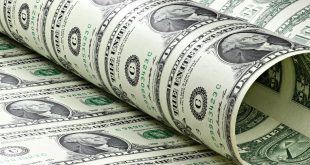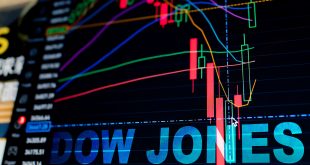Everybody in the US and beyond is talking about the yield curve inversion. At one point yesterday the yield on the 2-year Treasury briefly traded above that of the 10-year. Historically, such an inversion has been an accurate predictor of a recession, typically within two years.
Though these inversions in the bond market have been reliable predictors of past recessions, a significant number of observers still say that this economic downturn is not assured and some economists think the warning is a false alarm.
It is a strong indicator, and popularly looked upon as a reliable economic indicator, but a poor market timing tool. Just blink your eyes, and you will miss it, but the yield on the 2-year Treasury note traded briefly above the yield on the 10-year note Tuesday afternoon, temporarily inverting the yield curve and triggering recession warning bells.
So how worried should stock-market investors be? Data shows that the equities market has not paid so much attention to the signal. So, on Monday, US 5-year and 30-year Treasury yields inverted for the first time since 2006. On Tuesday, the yield spread between the 2-year and the 10-year rate came close to inverting but stayed positive.
Historically, the yield curve has inverted prior to recessions, indicating investors’ concern about the health of the economy. It would signal that we’re heading into a recession 12 to 18 months from now, but markets opted to remain cautious on that data.
When the bond market is healthy, yields are higher for bonds with a longer time to maturity, and lower for short-term yields. Investors expect a bigger reward for lending their money for a longer time. When the bond market is healthy, yields are higher for bonds with a longer time to maturity.
In other words, short-term yields are lower than long-term yields. Investors expect a bigger reward for lending their money for a longer time, giving the “yield curve” an upward sloping shape.
But when the opposite occurs, namely with an inverted yield curve, short-term bonds pay a higher yield than long-term ones. That represents a distortion in the market and suggests bond investors are worried about the economy’s long-term prospects. Some market observers, however, prefer not to be too hasty to predict a recession.
Markets have got two conflicting things happening at the same time; the ending of the pandemic or at least the lockdown procedures in most of the world. In addition, there is the prevalent uncertainty about a cease-fire, potentially, in Ukraine and Russia.
Traders will continue to monitor, look at and analyze the data and determine whether or not it is consistent with the historical guidance and the indication of recession, but some economists are not quite convinced that there will be a recession, adding that the economy is booming around the world.
Generally speaking, it will be useful and rational to remain cautious and still very optimistic about the US economy specifically and the overall stock market. Rising inflation, exacerbated by the Russia-Ukraine war, has resulted in increased market nervousness over the potential for an economic slowdown.
Amidst the Ukraine crisis and dimming global growth outlook, the latest jobs report out of the United States will take centre stage on Friday. Before that, the Fed’s favourite inflation metric is released on Thursday. The data is expected to reinforce confidence in the US economy even as the risk of a recession grows in Europe. But is there a danger the Fed is about to tighten policy too aggressively and how much will this week’s numbers matter for the US dollar?
A very tight labour market
There can be no doubt that the US labour market is extremely tight right now and Friday’s jobs figures will probably show that hiring conditions got even tighter in March. Nonfarm payrolls are projected to have risen by 490k over the month; a lower pace than in February but a very healthy gain, nevertheless. Accordingly, the unemployment rate is forecast to have dipped by 0.1 percentage point to 3.7% in what would mark a new post-pandemic low.
Wage growth is expected to have accelerated after slowing down in February. Average hourly earnings are anticipated to have increased by 5.5% year-on-year in March, up from 5.1% in the prior month.
Judging from the CPI report and the recent weekly jobless claims, big negative surprises are not looking too likely in either the NFP or PCE inflation numbers, so it’s possible there might be a bigger reaction to any shocks in the ISM manufacturing print.
Analysts expect a strong March employment report Friday to show 460,000 jobs added, according to Dow Jones. After a pandemic-induced 3.4% decline in 2020, the US economy last year grew at its fastest pace since 1984.
The average of 14 forecasts for the US economy shows US growth accelerating to 3.5% in the second quarter, from 1.9% in the first. But that second quarter estimate is down 0.8 percentage points from the prior survey. That means the economy is still seen as bouncing back from the omicron wave in 2022, though not as strongly as before, with inflation worsening.
Markets are easier to understand when two of the world’s most liquid asset marketplaces are telling the same story about the economy. This is not one of those times. On the one hand, there is the bond market, where the 2-year BX:TMUBMUSD02Y yield briefly was above the 10-year BX:TMUBMUSD10Y yield, and where other parts of the curve have inverted.

 Noor Trends News, Technical Analysis, Educational Tools and Recommendations
Noor Trends News, Technical Analysis, Educational Tools and Recommendations




